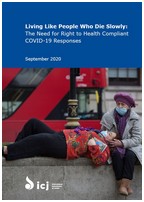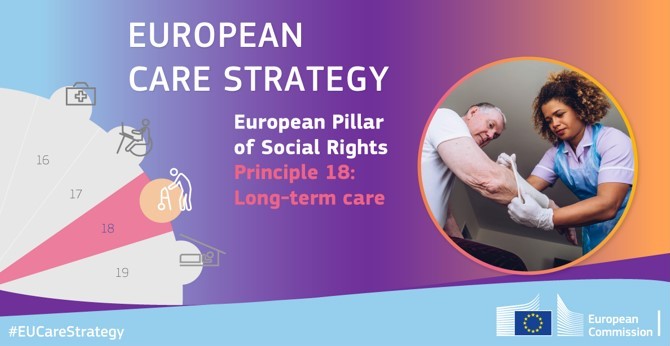EU – WHO Report-Alarming Health Disparities in Youth-Diet+
WHO Report Reveals Major Health Disparities Between European Teens
New WHO/Europe Report finds alarming disparities in diet, exercise and weight among adolescents from different socioeconomic backgrounds.
Copenhagen, 23 May 2024 – A new report released by WHO/Europe reveals alarming disparities in the health of young people across the WHO European Region, with those from less affluent families disproportionately affected. The report, based on data from 44 countries participating in the Health Behaviour in School-aged Children (HBSC) study, highlights unhealthy eating habits, rising rates of overweight and obesity, and low levels of physical activity among young people, all of which are significant risk factors for a range of noncommunicable diseases including cardiovascular diseases, diabetes and cancer.
Unhealthy eating habits on the rise
The report paints a concerning picture of adolescents’ dietary habits, with a particular focus on the decline in healthy eating behaviours and the rise of unhealthy choices. Fewer than 2 in 5 adolescents (38%) eat fruit or vegetables daily, and these figures decline with age (from 45% of 11-year-olds to 33% of 15-year-olds for fruit, and from 40% to 36% for vegetables).
Worryingly, more than half of adolescents report eating neither fruit nor vegetables every day (56% of boys and 51% of girls aged 15).
Conversely, the consumption of sweets and sugary drinks remains high, with 1 in 4 adolescents (25%) reporting daily consumption of sweets or chocolate. This rate is higher among girls (28%) than boys (23%) and has seen an increase since 2018, particularly among girls (from 23% to 27% for 11-year-old girls and from 26% to 28% for 15-year-old girls).
While daily soft drink consumption has seen a minor overall decline since the last survey in 2018, it still stands at 15% of adolescents, with higher rates among boys (16% versus 14% for girls) and those from less affluent families.
The report also reveals a concerning link between socioeconomic status and unhealthy dietary habits, with adolescents from lower-income families more likely to consume sugary drinks (18% versus 15%) and less likely to eat fruits (32% versus 46%) and vegetables (32% versus 54%) daily.
Dr Martin Weber, Team Lead for Quality of Care and Programme Manager of Child and Adolescent Health at WHO/Europe, said, “The affordability and accessibility of healthy food options are often limited for families with lower incomes, leading to a higher reliance on processed and sugary foods, which can have detrimental effects on adolescent health.”
Overweight and obesity: a growing health risk
The prevalence of overweight and obesity among adolescents has long been a significant public health concern, with over 1 in 5 adolescents affected. This figure has risen since the last survey in 2018, from 21% to 23% in 2022. Rates of overweight and obesity are higher among boys (27%) than girls (17%).
Alarmingly, adolescents from less affluent families are more likely to be overweight or obese (27% compared with 18% of their wealthier peers). This disparity highlights the urgent need to address the underlying socioeconomic factors contributing to these trends.
Physical inactivity: a cause for concern
The report also raises concerns about low levels of physical activity among adolescents. WHO recommends that young people get an average of at least 60 minutes of moderate to vigorous physical activity (MVPA) per day. The report shows that, overall, only 25% of boys and 15% of girls achieve 60 minutes of MVPA daily, with participation declining with age, particularly among girls (24% of 11-year-old girls versus 13% of 15-year-old girls).
While 60% of adolescents meet the WHO recommendation for vigorous physical activity (VPA) at least 3 times a week, this rate is lower among girls (51%) than boys (69%). This gender gap widens with age, with 65% of 11-year-old girls meeting the recommendation compared to just 46% of 15-year-old girls.
Once again, socioeconomic inequalities are evident, with adolescents from more affluent families reporting higher levels of both MVPA (16% versus 26%) and VPA (51% versus 69%). This suggests that factors such as access to safe spaces for physical activity and participation in organized sports may be influenced by family income.
Broader implications and public health concerns
The disparities highlighted in the report have far-reaching implications, extending beyond immediate health concerns. The long-term health consequences of unhealthy eating habits, physical inactivity and overweight/obesity during adolescence can be severe, including increased risk of cardiovascular diseases, type 2 diabetes and certain types of cancer. These conditions not only affect individual well-being but also place a significant burden on health-care systems and economies.
“Regular physical activity, healthy eating habits and maintaining a healthy weight are essential elements of a healthy lifestyle,” commented Dr Hans Henri P. Kluge, WHO Regional Director for Europe. “The report’s findings signal a need for targeted interventions to enable adolescents to adopt healthier behaviours and avoid habits that affect not only their current health and well-being, but also their future trajectories as adults.”
Dr Kluge added, “Furthermore, the socioeconomic disparities in adolescent health behaviours contribute to a vicious cycle of disadvantage. Children from less affluent families are more likely to experience adverse health outcomes, which can hinder their educational attainment, employment prospects and overall quality of life. This perpetuates social inequalities and limits opportunities for upward social mobility.”
The findings of the HBSC study also have implications for achieving global health targets, such as those of the United Nations Sustainable Development Goals (SDGs). In particular, the report’s focus on adolescent health aligns with SDG target 3.4, which urges countries to reduce premature mortality from noncommunicable diseases by one third by 2030. By addressing the root causes of health disparities and promoting healthy behaviours among adolescents, countries can contribute to achieving this ambitious goal.
Addressing the crisis
WHO/Europe, which covers 53 Member States across Europe and central Asia, calls for urgent action to address these concerning trends. The report recommends comprehensive strategies that focus on the following.
- Regulating food marketing: This involves implementing stricter regulations on marketing unhealthy foods and drinks to children and adolescents.
- Promoting healthy eating: This necessitates improving access to affordable, nutritious food, particularly for disadvantaged families, and implementing policies to discourage the consumption of unhealthy foods and beverages.
- Increasing physical activity: This requires creating safe and accessible environments for physical activity, and promoting initiatives that encourage adolescents to engage in regular exercise.
- Developing targeted interventions: Such interventions should support healthier behaviours among adolescents, particularly those from disadvantaged backgrounds. They could include school-based programmes that promote healthy eating and physical activity, community-based initiatives that provide access to affordable sports and recreation facilities, and public health campaigns that raise awareness of the importance of healthy behaviours.
- Addressing social inequalities: Policies should aim to reduce socioeconomic disparities in health, ensuring that all young people have the opportunity to lead healthy lives.
“These findings are a stark reminder that countries can do more in shaping young people’s health behaviours,” said Dr Kremlin Wickramasinghe, WHO/Europe’s Regional Adviser for Nutrition, Physical Activity and Obesity.
“Quality physical education in schools, promotion of healthy behaviours through grassroot-level sports clubs and design of cities that enable active travel are all effective in promoting physical activity. Mandatory front-of-pack labels to guide healthy food intake, restrictions on marketing unhealthy foods to children, provision of free healthy school meals to all children (universal free school meals) – there are a lot of policy measures that have been effective across the WHO European Region,” Dr Wickramasinghe added.
Dr Weber emphasized the importance of a multifaceted approach, stating, “Addressing the complex issue of adolescent health requires a combination of individual, family, community and policy-level interventions. We need to create environments that support healthy choices and empower young people to take control of their health.”
The HBSC study is a valuable resource for policy-makers and public health professionals seeking to understand and address the complex factors that influence adolescent health. By highlighting the impact of socioeconomic disparities, this report underscores the need for targeted interventions and policies that promote health equity for all young people.
“Investing in adolescents’ health is an investment in the future,” concluded Dr Kluge. “By addressing the underlying factors that contribute to unhealthy behaviours, creating an epidemic of inequality, we can improve the health and well-being of young people, reduce health disparities and build a healthier future for all.”
Извор: WUNRN – 24.05.2024


